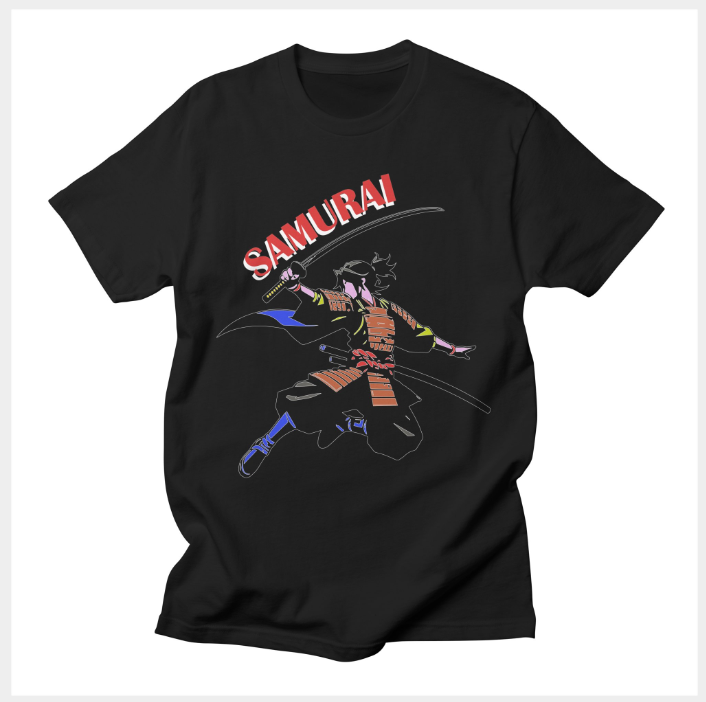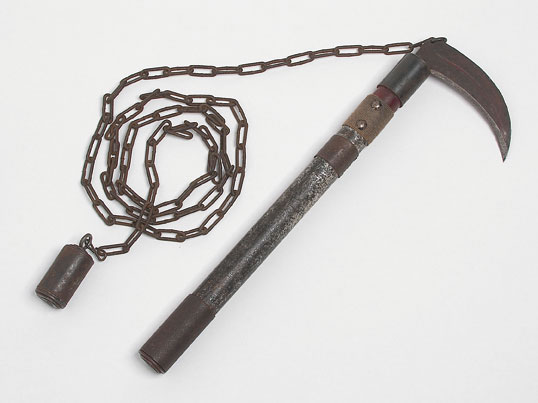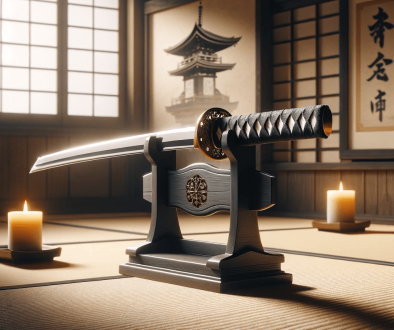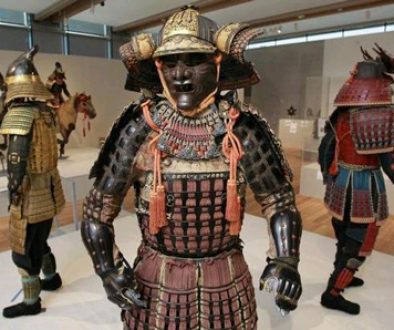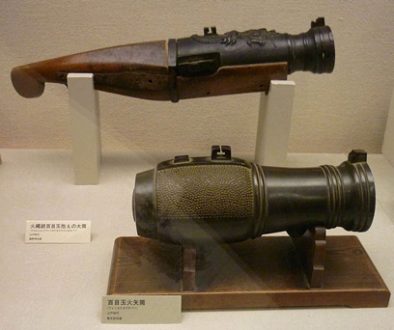Hand Weapons
The tambo (短棒) is a short staff, normally less than 1 meter in length. The tambo is a short staff, normally less than 1 meter in length. It can be used as a walking stick, support for the forearm when climbing, or as a weapon. This simple weapon is commonly found in regions of the world where firearms are not commonplace.
The kanabo (金棒) was a staff, slightly longer than a hanbo. It was made from either hardwood or iron and would include either spikes or studs at the top.
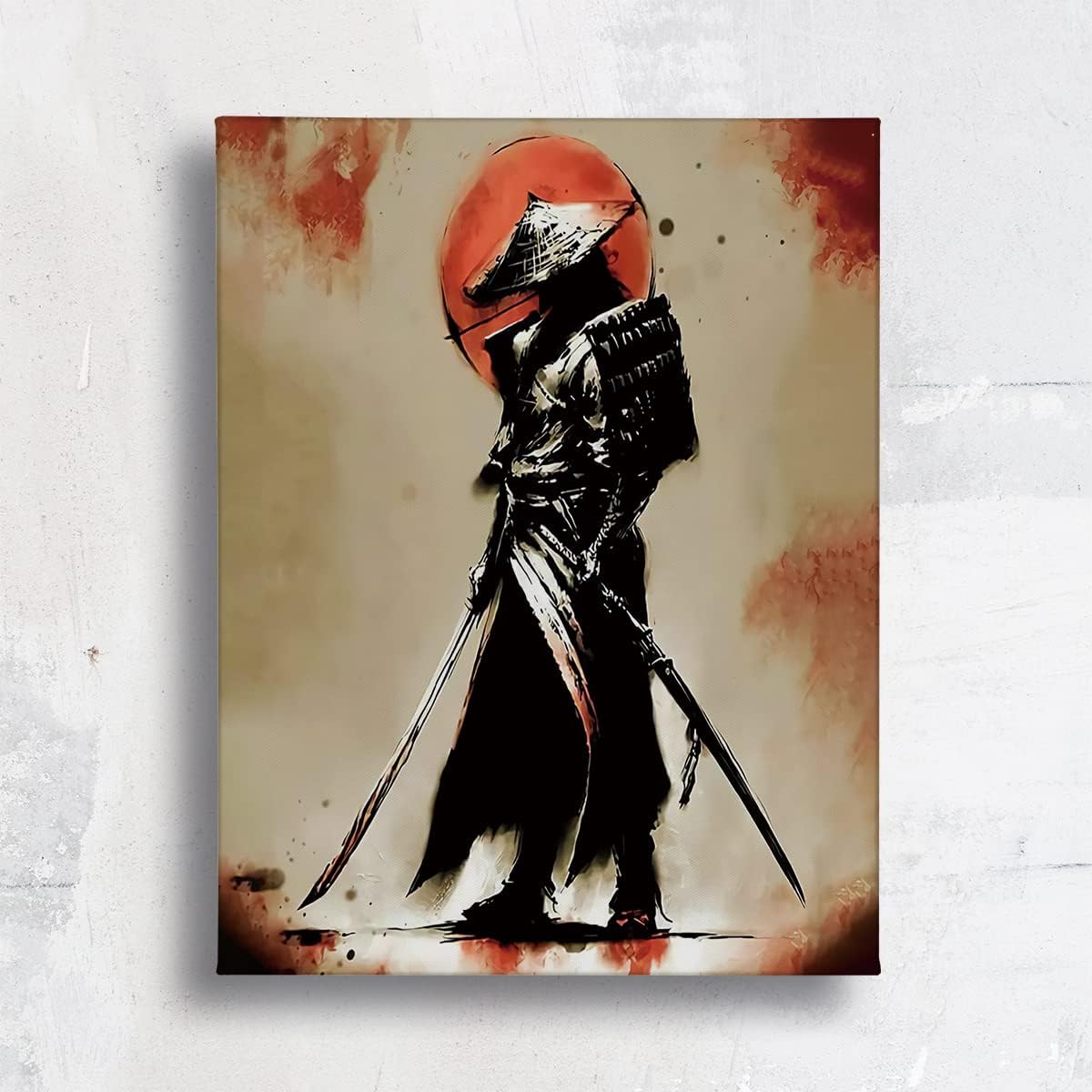
A kanabo was a staff, slightly longer than a hanbo. It was made from either hardwood or iron and would include either spikes or studs at the top. This weapon evolved from the nunchaku (a traditional Okinawan martial arts weapon) and it became more common in Japan in the 17th century when it began to be used by Buddhist monks, then by martial artist-instructors.
The jitte (十手) was created to allow guard members to be equipped with weaponry while ensuring that they could also comply with the rule of law that no swords should be carried into a shogun’s palace. The punishment for this crime was death.
The jitte is a special type of weapon that was created to suit the needs of a samurai or guard member. The jitte was usually crafted from metal and resembled a long handle with a handguard at one end and a curved blade resembling a fan at the other. These weapons were designed specifically to allow guards to be armed while still complying with the law that forbade the carrying of swords into the shoguns’ palace, in case you might them against him.
Kusari-fundo (鎖分銅) was a length of chain that would have small weights on either end. It was used heavily by the samurai police in the Edo period. It was also used in martial arts and self-defense.
The kusarigama (鎖鎌) commonly known as the chain sickle was used when a samurai had to defend himself against an opponent with a spear or sword. The tassel at the end of the chain can be used to distract an opponent’s weapon by throwing it in their direction. The tassel can also be sharpened to cut into an opponent’s neck, or exposed body parts.
History of Japanese Swords – Tachi & Katana
The Japanese sword is known as the Katana. The sword was first introduced by the Tachi swordsmen.
The word “Katana” literally means “sword that cuts down the enemy” in Japanese. It is a curved, single-edged blade that was used by samurai warriors to defeat their opponents in battle. The use of these swords was first introduced by the Tachi swordsmen during the Muromachi period (1333-1478).
History of Japanese Knives – Tantō & Wakizashi
Blades and knives have been used as weapons and tools for centuries. The first blades were made from flint, rocks, and shells. Blades from these materials were brittle and would not hold a sharp edge for long.
In ancient times, bladesmiths would use a forge to create steel from iron ore. This process was known as “Crucible Steel.” In order to make this steel stronger, they added carbon to the iron ore using coal or charcoal as their fuel. This type of steel is not rust-resistant but it has a higher quality than the equivalent steel that is made today with the same process.
The Japanese people have a rich history of knife making that dates back to ancient Japan. There are two different blade types in Japanese culture: tantō and wakizashi.
Japanese Swords vs. Samurai Swords – What’s the Difference?
Samurai swords are the type of sword that was traditionally used by samurai warriors. It is also referred to as a Katana.
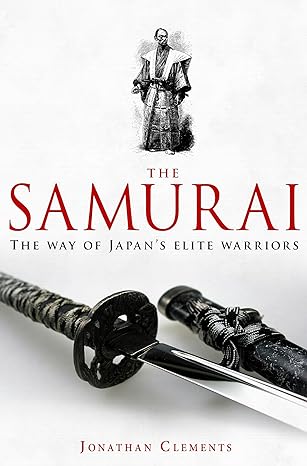
The main difference between Japanese swords and samurai swords is the blade style. Japanese sword blades are curved, while samurai swords are straight. This difference in blade styles has to do with the history of these two weapons. Japanese blades were originally designed for slashing, while Samurai blades were designed for thrusting through armor worn by warriors.
Japanese sword blades can be made from stainless steel, carbon steel, or even titanium steel – making them more durable than samurai swords which are usually made from softer metal like bronze or brass.
